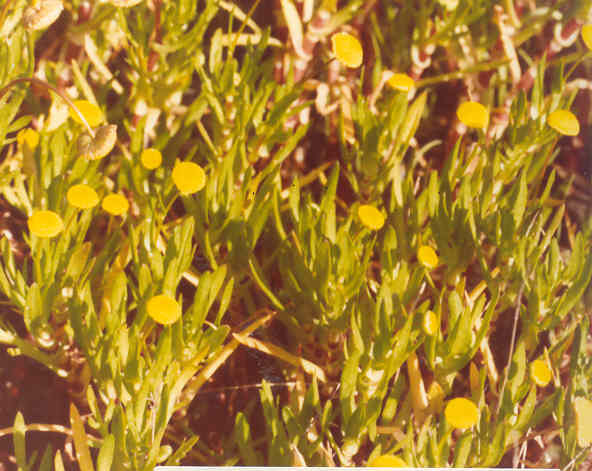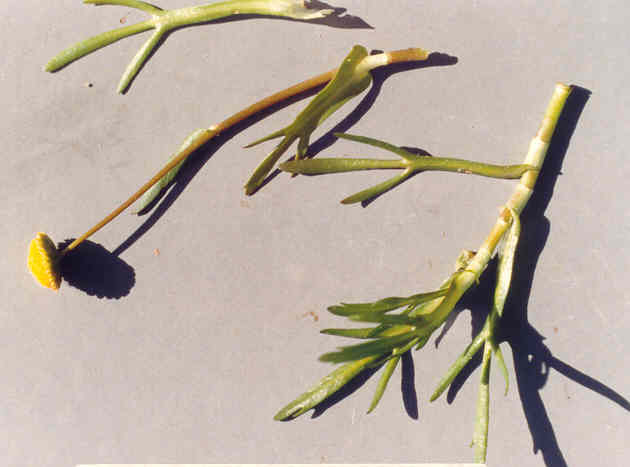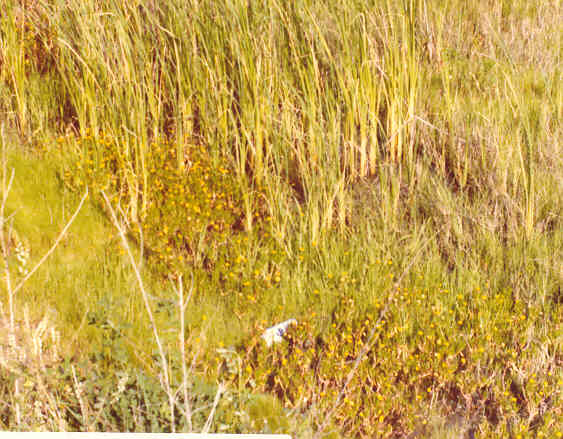
Cotula coronopifolia L.
Asteraceae (Sunflower Family)
South Africa
Common Brass-Buttons
African Brass-Buttons
 |
Cotula coronopifolia L.Asteraceae (Sunflower Family)South Africa
Common Brass-ButtonsAfrican Brass-Buttons
|
March Photo
Plant Characteristics:
Perennial, decumbent or repent, fleshy, glabrous, branched; stems 2-3 dm.
long, rooting from nodes; lvs. 2-7 cm. long, linear-oblong to oblanceolate,
entire to coarsely and deeply few-toothed, with broad rachis, 8-10 mm. broad;
heads depressed, 6-15 mm. diam., bright yellow; phyllaries oblong, 3-5 veined,
+/- anthocyanous (showing anthocyanin in the herbage, a class of soluble
glucoside pigments producing reddish or purplish coloring); pistillate fls. in 1
row, on pedicels as along as invol., without corolla; disk-fls. on much shorter
pedicels, numerous; aks. winged, almost 2 mm. long.
Habitat:
Common on mud and moist banks, about salt marshes, etc., many Plant
Communities; cismontane and occasionally to desert edge; Santa Catalina, Santa
Cruz and Santa Rosa Ids. March-Dec.
Name:
Greek, cotula, a small cup and
refers to a hollow at the base of the leaves.
Coronopifolia means the leaves
are like those of Coronopus whose
common name is Swinecress and which is a naturalized member of the Mustard
Family. Coronopus
is from two Greek words meaning crown and foot. (Dale 61).
General:
Common in the study area. The
photographed specimens were along Back Bay Dr. in Big Canyon. (my comments).
The Spanish Californians called the plant "Boton de Oro", that
is, Gold Button. The foliage when
crushed gives out an odor between lemon-verbena and camphor.
(Dale 61).
Text Ref:
Abrams, Vol. IV 402; Hickman, Ed. 242; Munz, Calif.
Flora 1273; Munz, Flora So. Calif.
153; Roberts 10.
Photo Ref:
Feb-Mar 83 # 12,13; Jan 1 84
# 8.
Identity: by R. De Ruff, confirmed by F. Roberts.
First Found: March 1983.
Computer Ref: Plant Data 164.
No plant specimen.
Last edit 7/30/05.
 |
 |